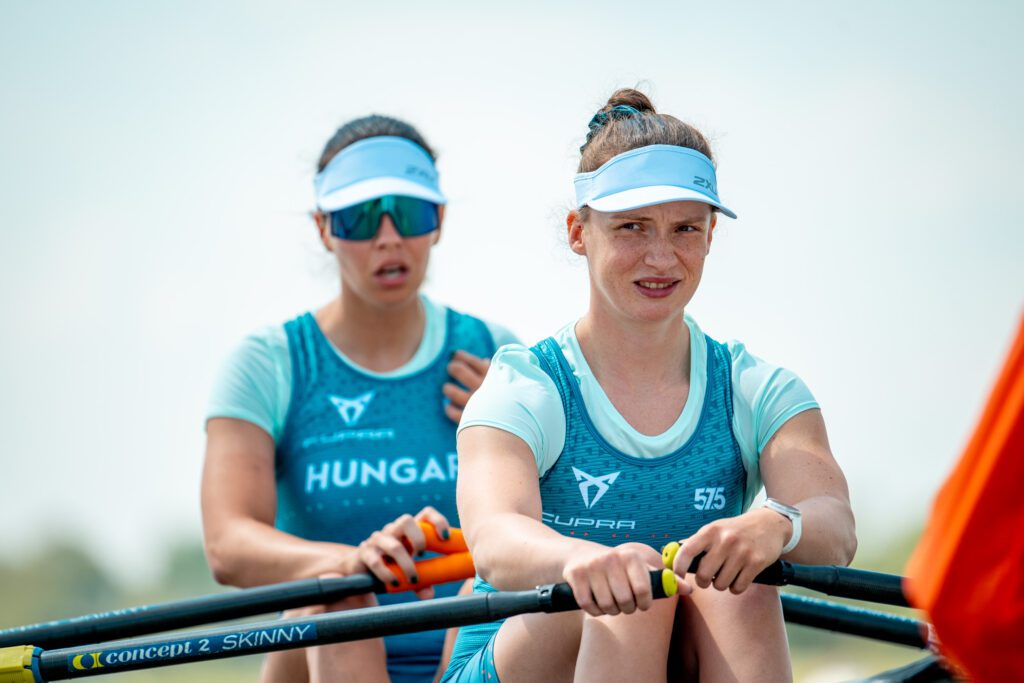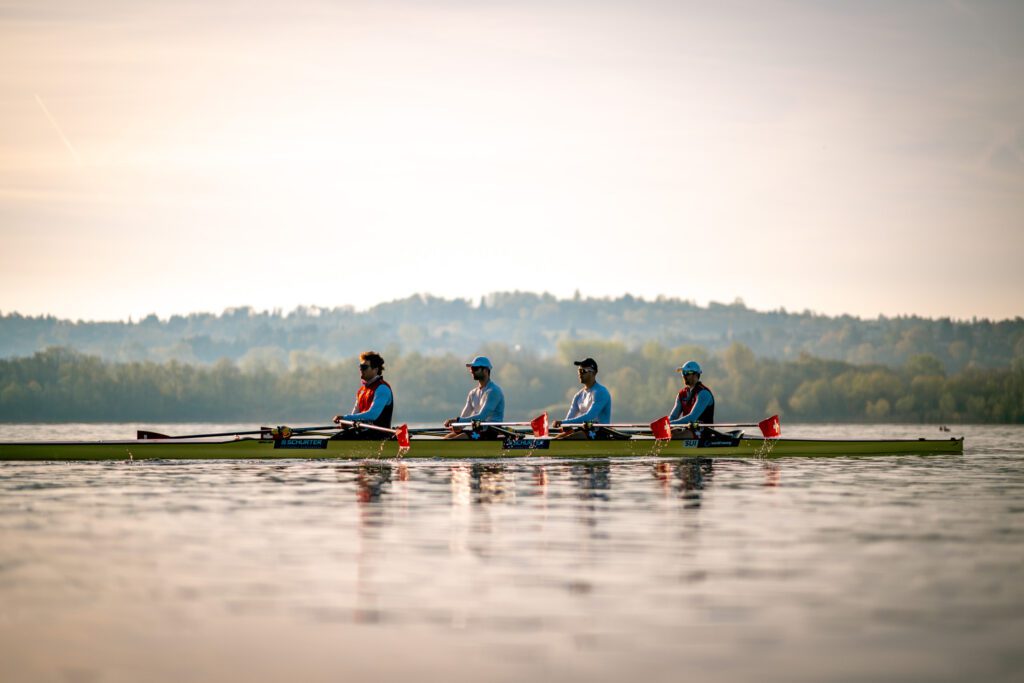Henley Royal Regatta has smashed through a handful of traditions in recent years, bringing in wall-to-wall TV coverage, drone cameras, new women’s events, women umpires and, from next year, the possibility that they may move to a six-day regatta. But one of the most earth-shattering changes happened on day one of the 2019 extravaganza, when a whole new verdict was invented. For 180 years the closest verdict acknowledged at the Royal Regatta had been a tidy-minded one foot. Now, in a split second, it had shrunk to millimetres — but, of course, HRR doesn’t use metric measurements.
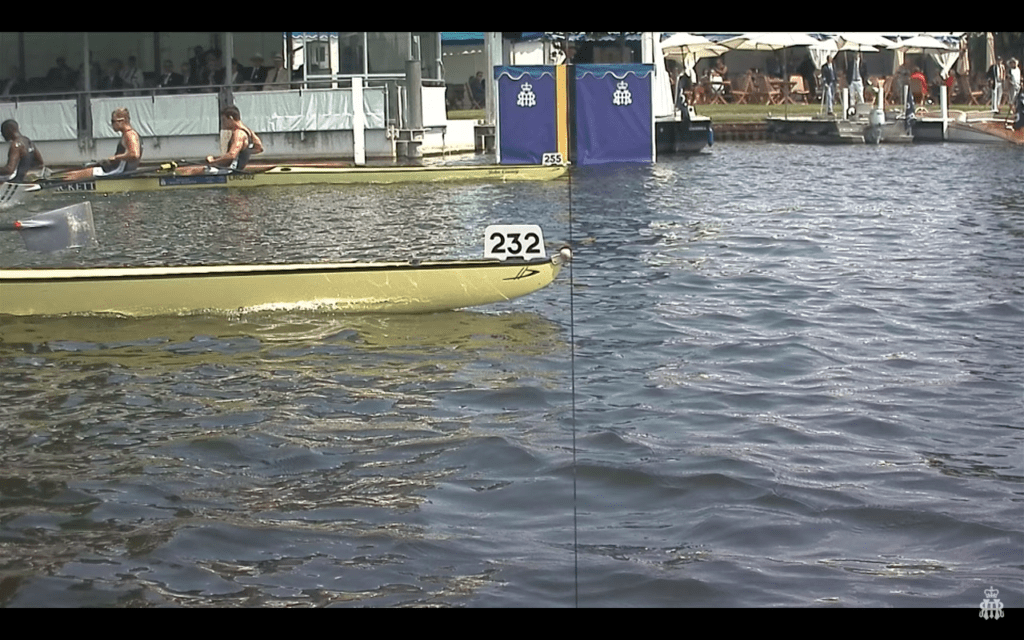
Photo The narrowest of margins – London Rowing Club (above) were deemed to be winners by a matter of millimetres
Credit Henley Royal Regatta
Race 42, Wednesday 2:35pm, a round of the Wyfolds. A barnstormer between the coxless fours of Aramoho Whanganui from New Zealand and London RC, toe to toe up the entire course. Newcomers Whanganui understandably having a bit more trouble steering but fighting back with guts every time London looked ready to take a solid lead. Past Remenham and Whanganui getting the upper blade for a change, pulling into the Enclosures only to come under the cosh of a last hard London sprint. More steering trouble from Aramoho and London seizing their chance to push into the lead again. Dashing to the line, London up, but in the slow phase of their stroke just as the Whanganui bow surged level…. And bang, a dead-heat.
Well it wasn’t, not quite — and the carefully worded rules say that if the finish line judge can decide, then it’s a definite result and there’s no re-row. There was perhaps a quarter of a bow-ball’s width difference between the two, as shown by the finish-line camera (the real judges’ one, not the TV camera which is slightly off-set). And a new HRR finish margin verdict was born: “by the narrowest of margins”: which deserves to have a whole batch of memes invented for it. There’s no point wondering if the start’s properly aligned, or to what precision: the format of the regatta merely says the start judges will align the boat and the finish judge will decide the verdict. End of.
The other big talking point was umbrellas, specifically rogue big table umbrellas which blew off the bank around the Barrier area and got horribly in the way. The first wildcard parasol flew across Scots College Australia, landing on the far side of the PE schoolboys and making most of bow side miss a stroke or crack into it as it tumbled down the blades. Undaunted, they carried on, beating Claires Court School with composure in a pretty respectable time, given the near-boat-stopping incident. Thames head coach Ben Lewis, in his last season with the club, thought nobody was going to fetch the brolly out of the river so dived in, before being waved away by the safety launch. There was nearly a repeat later in the morning, three more of the wretched umbrellas blowing off the bank, but this time the slick HRR system zoomed into action and got rid of them.
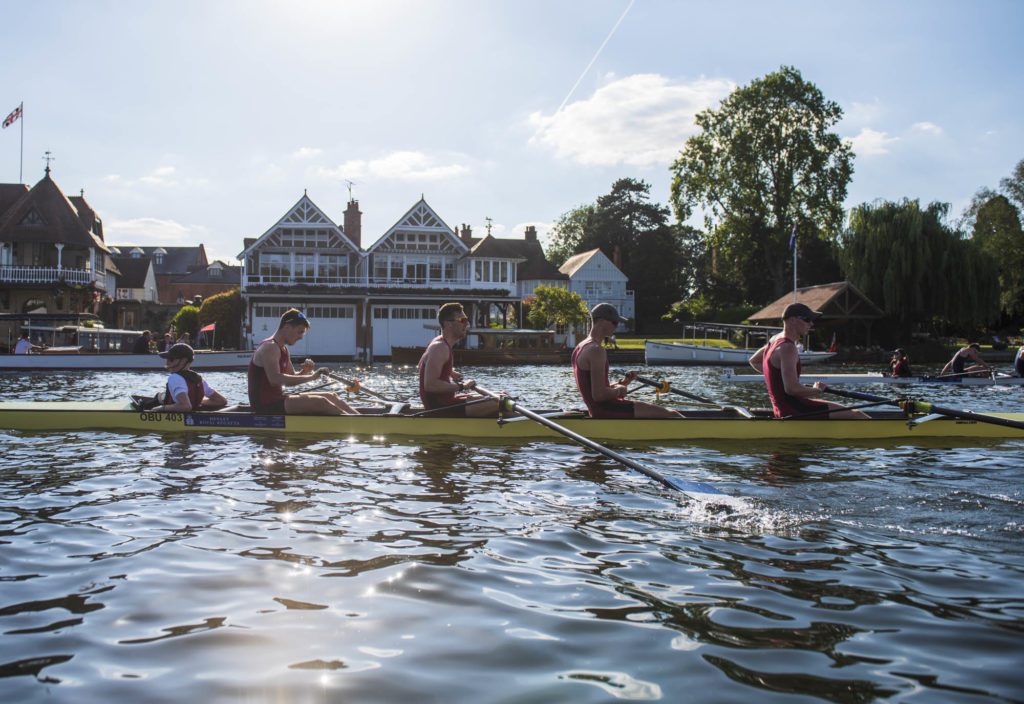
Photo Oxford Brookes Prince Albert coxed four, which equalled Durham’s Barrier record of 1-55
Credit Benedict Tufnell
A fresh tail-wind rose and fell through the afternoon, but the only crew which profited was the Oxford Brookes Prince Albert coxed four, which equalled Durham’s Barrier record of 1-55 in their run up the course against Georgetown. The stream is low this year, June’s torrential rain having long vanished from the Thames, and a fine spell of warm weather having preceded HRR. Keen speedy crews need to get the quick performances in, as finals day is set to be a light head-wind, so any chance of record-setting has to be done earlier in the week.
Errors on the first day of racing included a lot of close encounters with the solid wooden booms, Bryanston School’s first pre-qualified appearance in 25 years ruined by their own brief smash while looking encouragingly quick against Lawrenceville in the Princess Elizabeth. Conversely Reading Blue Coat, pre-qualifying in the same event for the first time ever, grasped the round-one nettle and beat Boston College, who had earned a rather lucky selection. Blue Coat are a credit to their new coach Allan French, who has been quietly guiding successful upriver crews for some time. The PE was as usual a big draw, Shiplake beating King’s Chester with a sub on board, Hampton holding St Paul’s School Concord to a narrow 2/3 length verdict, and everybody continuously mentioning the big units of Scotch College Melbourne, the Australian invaders who are unbeaten this year and who made short work of Bedford School.
Molesey and Thames B had a little clashette in the Wyfolds before the non-tidal club took the honours, and some of the eights were firmly steered back onto their side by stern-minded umpires who have had enough of supposedly accidental Boat Race style washing-down by cheeky coxes. Westfalen’s German Wyfold four, whose website says the club is made up of students, lost an oar from the 2-seat at the Milepost and then lost the race against Maidenhead, while Dutchmen Okeanos, who appear to have a similar club background, walloped the Lea and set social media buzzing about their provenance.
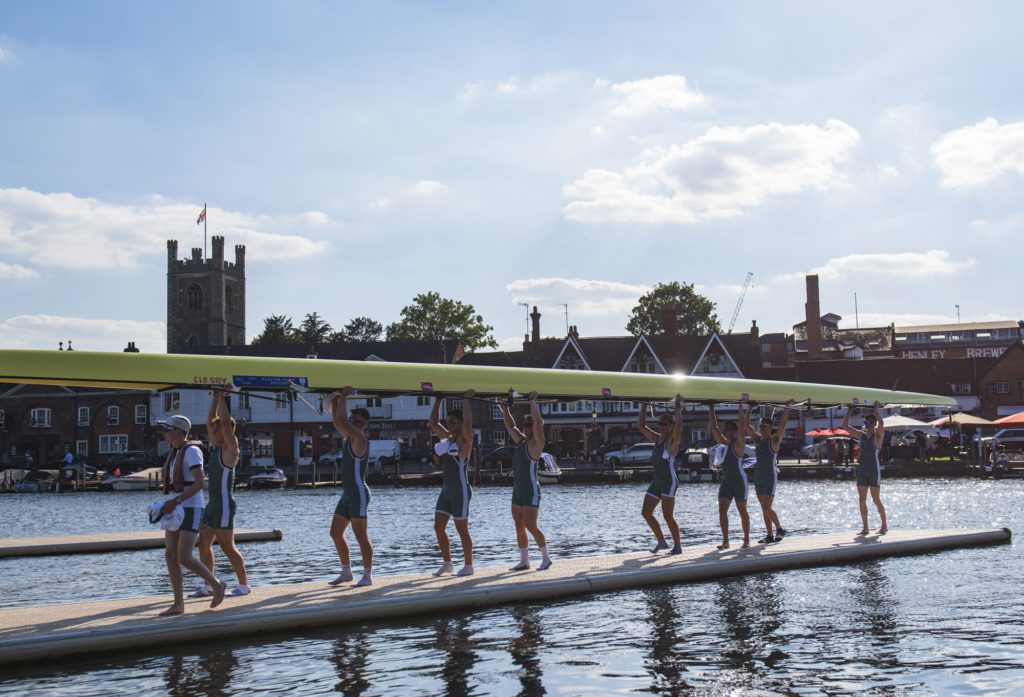
Photo Day 1 at the 2019 regatta draws to a close
Credit Benedict Tufnell
The Diamond Jubilee junior women’s quads got going too, but in this highly competitive event the only close race was Notts County’s narrow win over Enniskillen, the English crew having trouble staying straight as they came up the course. Oxford Brookes’ strength in depth in the Temple was illustrated by the fact that their C crew (in fact the fifth eight of the club, which has two crews in the Ladies’ Plate) lost to UL’s A crew by only 2/3 of a length, while their A and B crews registered straightforward wins as did Harvard, Penn and Nereus. The best match-up of Thursday in the student eights could be the first race of the entire day: Newcastle A against Edinburgh.
